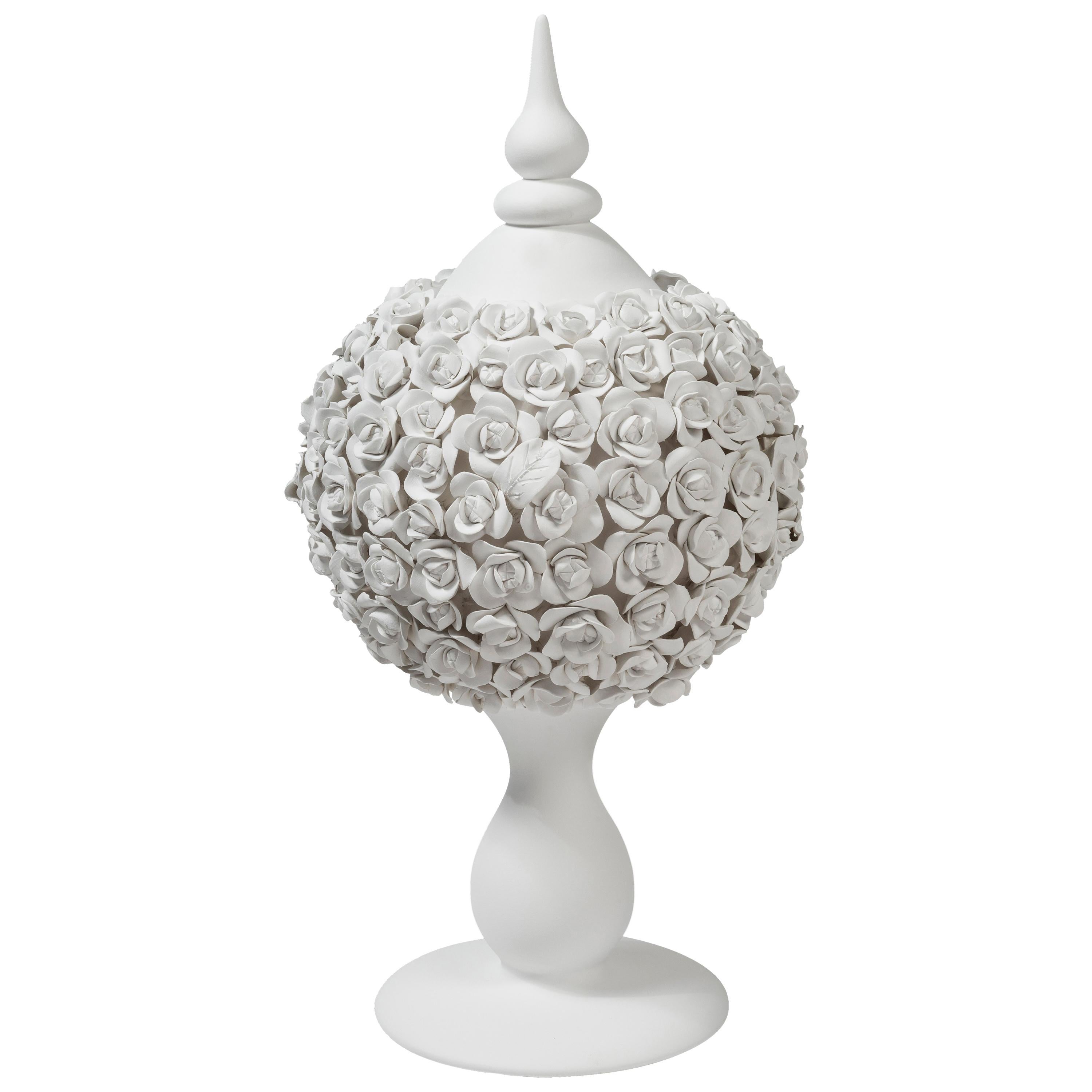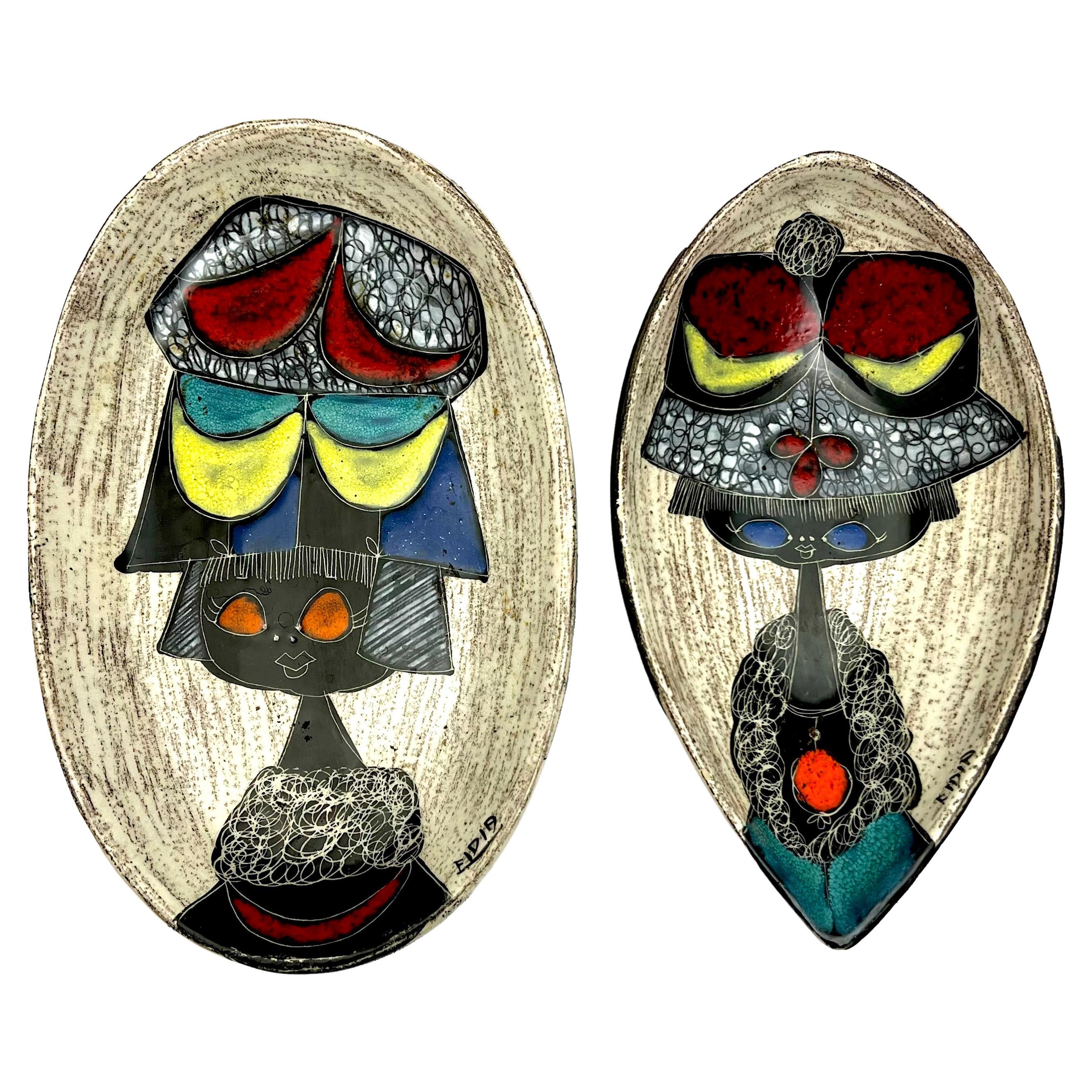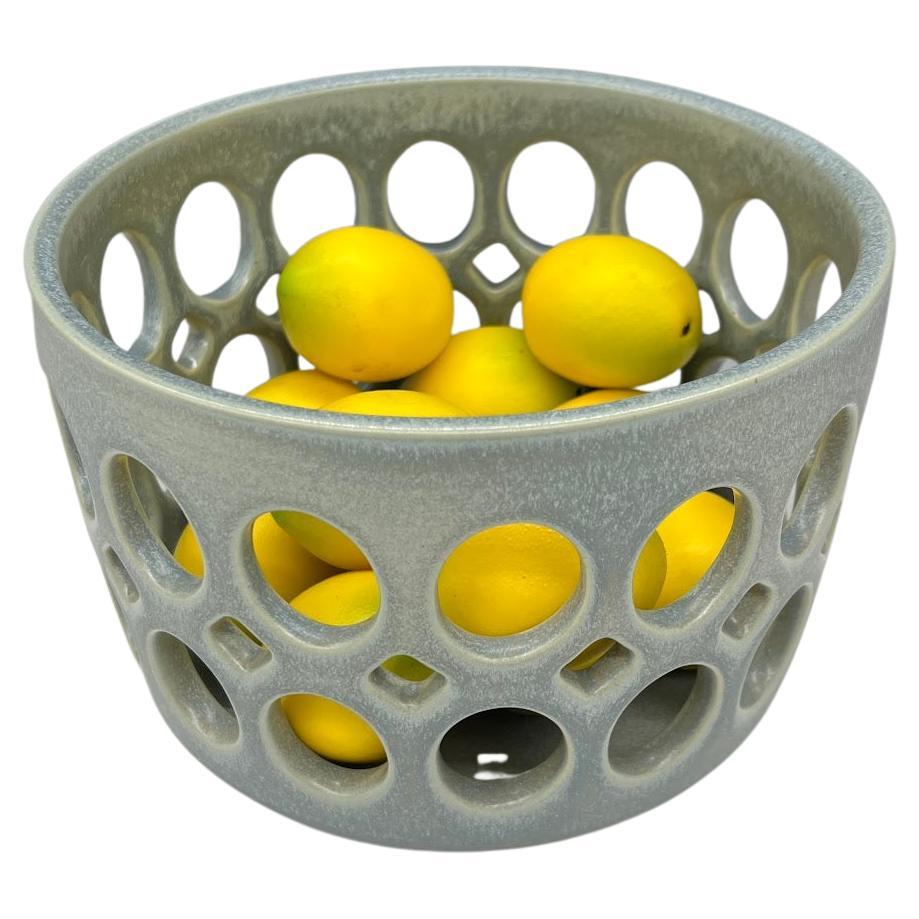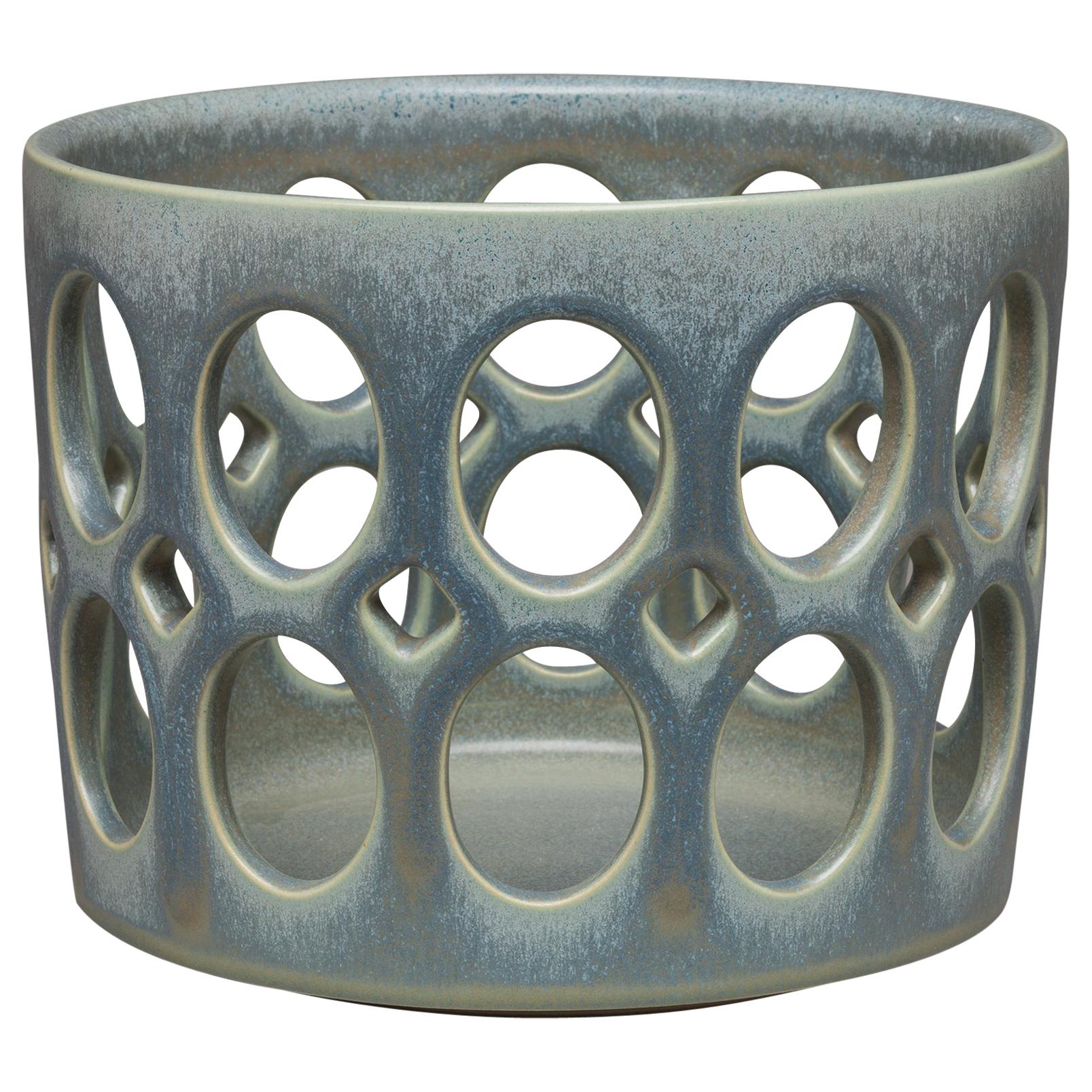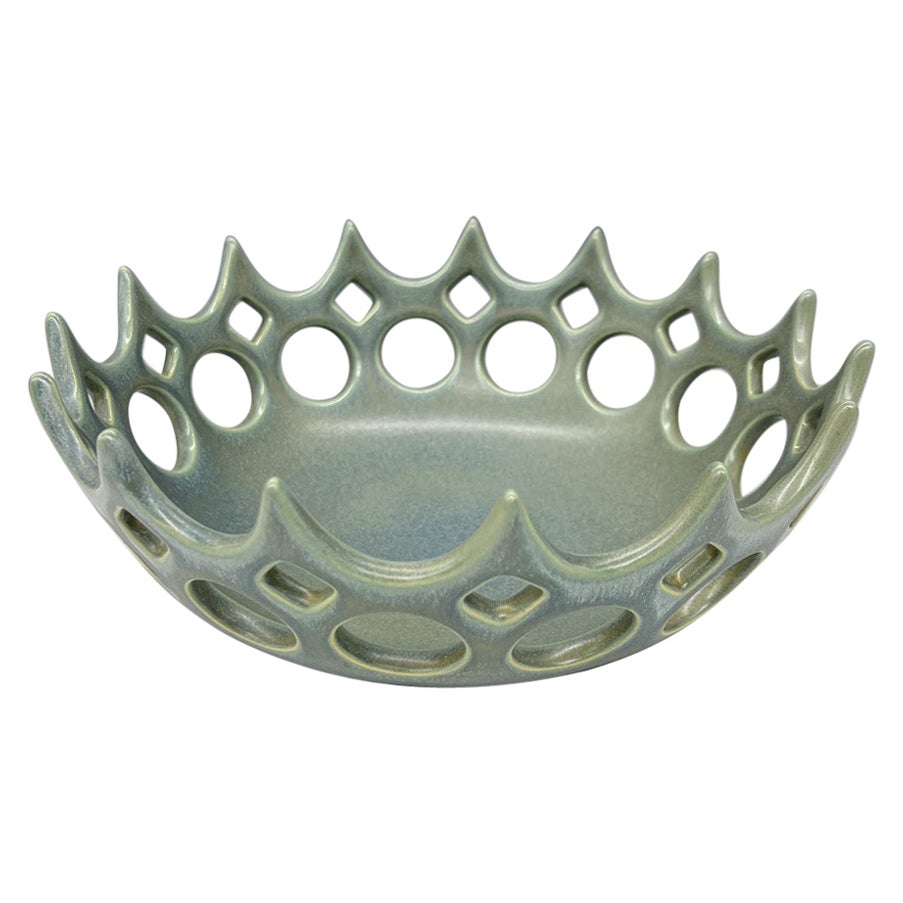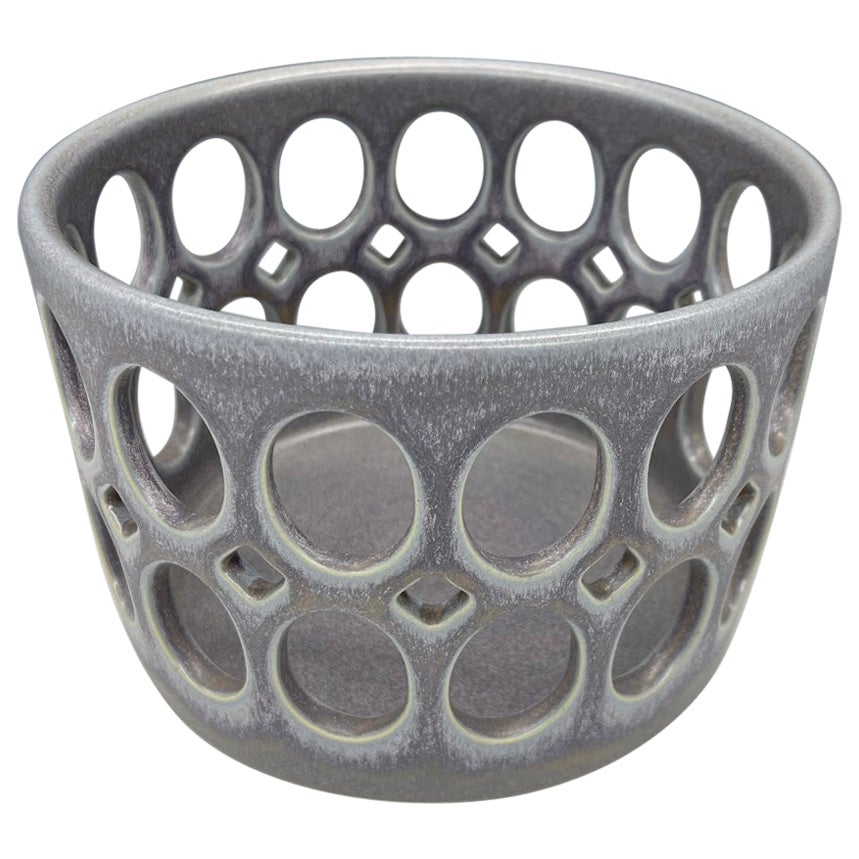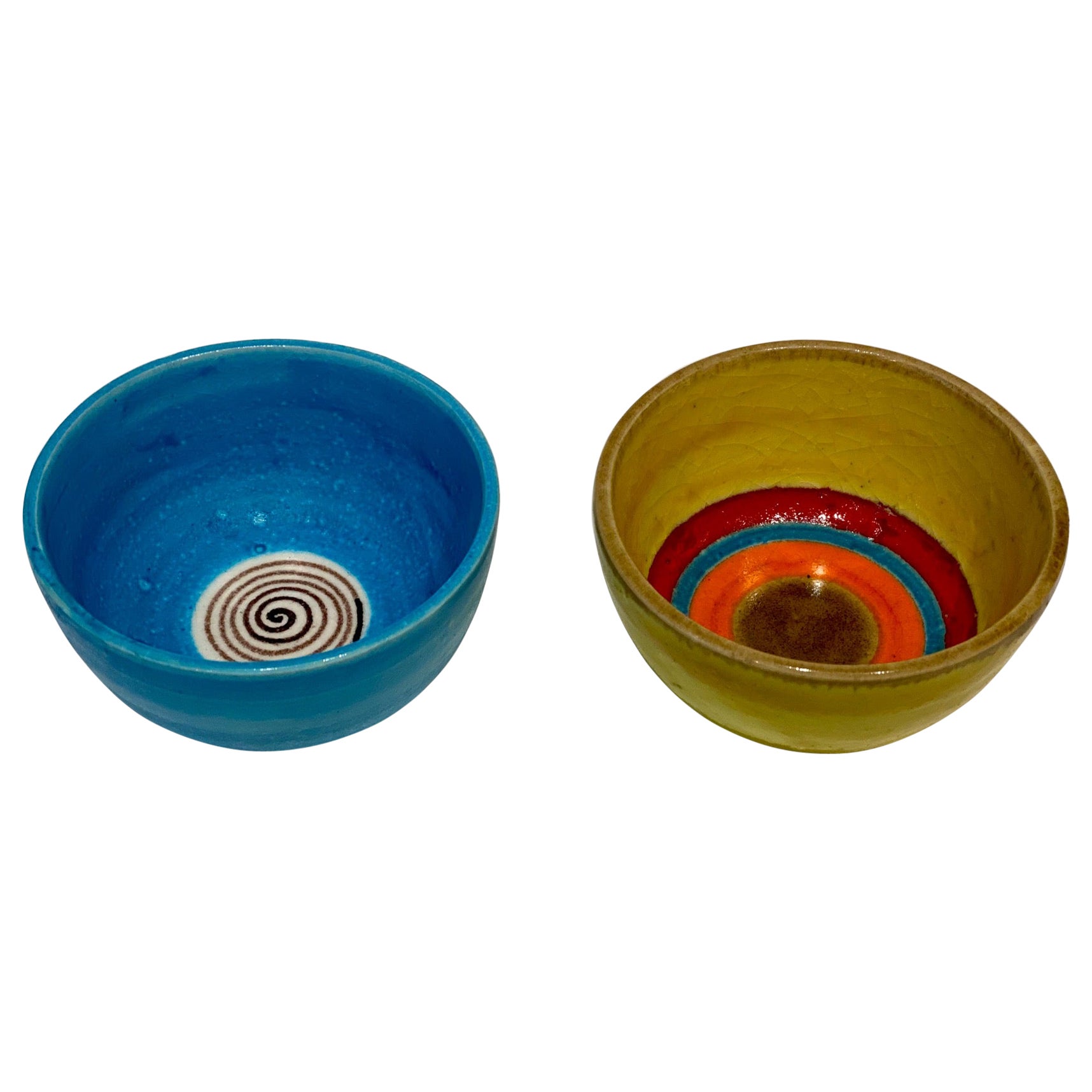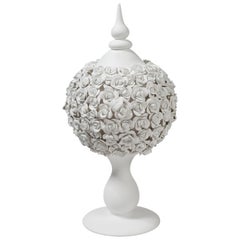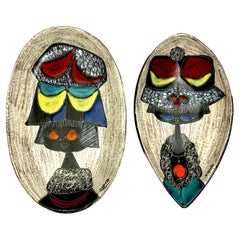
Two Matching Midcentury Italian Fruit Topiary
View Similar Items
1 of 7
Two Matching Midcentury Italian Fruit Topiary
About the Item
- Dimensions:Height: 20 in (50.8 cm)Width: 14 in (35.56 cm)Depth: 14 in (35.56 cm)
- Sold As:Set of 2
- Materials and Techniques:
- Place of Origin:
- Period:
- Date of Manufacture:1920
- Condition:Wear consistent with age and use.
- Seller Location:Fairhope, AL
- Reference Number:Seller: 21609021stDibs: LU895810220301
You May Also Like
- Fruit Stand Sphere Coco Camellias, Matt White Ceramic, ItalyBy VG-VGnewtrendLocated in Treviso, TrevisoVG is dedicating a collection of ceramics to the genius of Coco Chanel, a leading figure in the story of modern fashion, and a designer who created a style famous for its simplicity ...Category
2010s Italian Modern Decorative Bowls
MaterialsCeramic
- Fratelli Fanciullacci Fruit BowlBy Fratelli FanciullacciLocated in Waddinxveen, ZHFratelli Fanciullacci Pottery: during the first half of the 20th century the firm slowly branched out into a rich repertoire of artistic products. The family understood the pulse of ...Category
Vintage 1960s Italian Mid-Century Modern Ceramics
MaterialsCeramic
- Pair of Midcentury Italian Figural Plates by FidiaBy FantoniLocated in New York, NYFabulous Italian hand painted figural bowl and tray by Fidia. These big eyed girls are in the style of Fantoni. Bound in leather on the back these are gre...Category
Vintage 1960s Italian Decorative Dishes and Vide-Poche
MaterialsCeramic
- Pierced Ceramic Fruit Bowl BlackBy Lynne Meade CeramicsLocated in Oakland, CAInspired by Mid-Century Modern design, the pierced collection is wheel thrown and hand pierced stoneware with a satin glaze. Small holes are created when the clay is still wet and th...Category
21st Century and Contemporary American Mid-Century Modern Ceramics
MaterialsClay
Sold$260 - Two Pairs of Italian Maiolica Baskets, circa 1780By Antonio FerrettiLocated in Milano, ITTwo pairs of maiolica baskets Antonio Ferretti Manufacture Lodi, circa 1770-1790 Maiolica polychrome decorated “a piccolo fuoco” (third fire). Measures: A) Height 3.54 x 6.69 x 9.84 in (9 x 17 x 25 cm); B) Height 3.93 x 7.48 x 11.02 in (10 x 19 x 28 cm). Total weight 4.85 lb (2.200 kg) State of conservation: A) One of the smaller baskets has some areas of restoration, the other slight chipping from use; B) One of the larger baskets is intact and the other shows a clearly glued break. The mold with which the baskets were forged simulates a wicker weave. The two larger works have high, vertical walls, with branch-shaped handles penetrating the weave. The painted decorations, small polychrome flowers applied only externally, highlight the points where the weaves intersect. The decision to leave the center of the basket devoid of decoration is highly unusual, but given the size and complexity of the shape, as well as the quality of the enamel, it is possible to hypothesize that it represents a precise choice in manufacturing or for a particular client. The two smaller baskets have small, twisted handles and, on the outside, reproduce more decisively the characteristic wicker weave, obtained through thin molded lines. The interior exhibits a rich, typical decoration of naturalistic flowers: a bunch centered around a main flower and secondary stems accompanied by small “semis”. The exterior of these works is also adorned with small little flowers where the weaves intersect. The size and morphological characteristics of the baskets confirm their attribution to the Lodi factory of Antonio Ferretti between 1770 and 1790, during its most successful period; by this point his original reworking of the "Strasbourg" decoration, known as "old Lodi", had achieved great fame even outside Italy. This decorative choice represented a strong point of the Lodi factory, which established itself thanks to the vivid nature of the colors made possible by the introduction of a new technique perfected by Paul Hannong in Strasbourg and which Antonio Ferretti introduced in Italy. This production process, called “piccolo fuoco” (third fire), allowed the use of a greater number of colors than in the past; in particular, the purple of Cassius, a red made from gold chloride, was introduced. Its use allowed for many more tones and shades, from pink to purple. The Ferretti family had started their maiolica manufacturing business in Lodi in 1725. The forefather Simpliciano had started the business by purchasing an ancient furnace in 1725 and, indeed, we have evidence of the full activity of the furnaces from April of the same year (Novasconi-Ferrari-Corvi, 1964, p. 26 n. 4). Simpliciano had started a production of excellence also thanks to the ownership of clay quarries in Stradella, not far from Pavia. The production was so successful that in 1726 a decree of the Turin Chamber came to prohibit the importation of foreign ceramics, especially from Lodi, to protect internal production (G. Lise, La ceramica a Lodi, Lodi 1981, p. 59). In its initial stages, the manufacture produced maolicas painted with the “a gran fuoco” (double fire) technique, often in turquoise monochrome, with ornamentation derived from compositional modules in vogue in Rouen in France. This was also thanks to the collaboration of painters like Giorgio Giacinto Rossetti, who placed his name on the best specimens next to the initials of the factory. In 1748 Simpliciano made his will (Gelmini, 1995, p. 30) appointing his son Giuseppe Antonio (known as Antonio) as universal heir. After 1750, when Simpliciano passed away, Antonio was directly involved in the maiolica factory, increasing its fortunes and achieving a reputation on a European level. Particularly important was the aforementioned introduction in 1760 of the innovative “a piccolo fuoco” (third fire) processing, which, expanding the ornamental repertoire with Saxon-inspired floral themes, could commercially compete with the German porcelains that had one of its most renowned offerings in the naturalistic Deutsche Blumen. Antonio Ferretti understood and promoted this technique and this decoration, proposing it in a fresher and more corrective version, less linked to botanical tables...Category
Antique 1770s Italian Neoclassical Ceramics
MaterialsMaiolica
- Blue/Green Pierced Cylindrical Ceramic Fruit BowlBy Lynne Meade CeramicsLocated in Oakland, CAInspired by Mid-Century Modern design, this bowl is wheel thrown and hand pierced stoneware with satin glaze that breaks from blue to green to grey. Small holes are created when the ...Category
2010s American Mid-Century Modern Decorative Bowls
MaterialsCeramic, Clay
Recently Viewed
View AllMore Ways To Browse
Italian Fruit Topiary
Porcelain Fruit Basket Italy
Porcelain Topiary
European Wicker Basket
Grapevine Basket
Chinese Antique Grain Baskets
Chinese Wood Bowls
Vintage Bathroom Trash
Apache Olla
P S Heggen
Antique French Egg Basket
Vintage Leather Waste Bin
Antique Chinese Brass Bowls
Chinese Antique Brass Bowls
Waste Basket With Lid
Wood Wastepaper Basket
Vintage Wicker Waste Basket
Wicker Waste Basket
